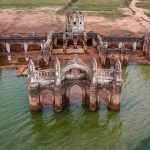The End Of The World
Many people have a different idea of how the world will end. Some believe that a massive asteroid will collide with Earth, killing everyone and everything on the planet. Some believe that climate change will be the end of us. Many people believe a nuclear war will be the end. A few less likely options are aliens and a zombie apocalypse. Nobody has the answers, but scientists are trying to figure this out and more.
Brian Wilcox
Brian Wilcox works for the NASA Advisory Council on Planetary Defense. His mission was simple. He was told to find realistic ways that the world might end, and then stop it from happening. He never expected his research would take him to one of the most beautiful places in nature.
Yellowstone National Park
When Brian first began, he focused on keeping the Earth from getting hit by an asteroid or a comet. It wasn’t long before his research took his attention and his worry away from space debris, and it brought him to Yellowstone National Park. The part is about 3,500 square miles of rivers, canyons, forests, and Old Faithful. Old Faithful draws tourists from all over the world. On the surface, it is beautiful. Beneath, there is trouble brewing. NASA struggles to contain a ‘Super Volcano’ that could destroy all of humanity.
A Super Volcano
Five miles beneath the surface is a pool of magma that has access to the surface. It is a volcano, but not a typical volcano. Because of its explosive potential, it is classified as a supervolcano. There are only 20 of them on the planet. According to Brian, the threat of a super volcano erupting is much worse than an asteroid or comet threat.
Eruptions
According to experts, a supervolcano erupts every 100,000 years. Yellowstone’s supervolcano has burst three times in history, and it has occurred every 600,000 years. According to experts, it has been about that long since it happened the last time. Unfortunately, eruption models aren’t an exact science. Just because we are at the 600,000-year mark, it doesn’t mean that we are guaranteed another eruption. However, Brian was focused on doomsday, and this was something that he couldn’t ignore. He says that if the supervolcano did erupt, it would be devastating to everything on Earth.
What Would Happen?
If the volcano did erupt, three feet of ash would blanket Wyoming, Colorado, Montana, and Idaho. The atmosphere would cool to the point where it would cause a volcanic winter, which would wipe out all the crops, and make growing more impossible. The food reserves would run out in about 74 days. Buildings would be damaged, and power plants would shut down. It would cause chaos and the end of everything.
Preventing An Eruption
Because Brian’s job was to pinpoint the threats and then figure out how to stop them, he got right to work. He knew that a volcano would erupt if the magma reached a specific temperature. He figured that if they could cool the volcano down, they could prevent an eruption.
Fill the Volcano With Water
Brian figured that when you want to cool something down, you pour water on it. Brian thought that it sounded archaic, but it could work. Brian thought that they could transport the water using an aqueduct uphill into the mountains. Unfortunately, this would be difficult and costly, and many people would find this to be a waste of water. Because there are people all over the world who are desperate for water, this would be a very controversial project.
Another Answer
Because building the infrastructure would need the approval of Congress, which isn’t likely, they went back to the drawing board and came up with another idea. Rather than building infrastructure, they could drill down just over six miles into the earth on each side of the volcano. This would allow recyclable water to be pumped in at high pressure, which would cool the magma from the bottom up. If they were to drill this way, they could create a geothermal plant, which can generate electric power at great prices. Unfortunately, this strategy could have risks that are catastrophic. If they drilled at the wrong angles, they could damage the cap over the magma chamber, which could release toxic gases into the atmosphere. It could even trigger an eruption. This would cost $3.46 billion, and it could take tens of thousands of years to lower the temperature safely.
Still Working
Brian may not have found a cost-effective and safe way to eliminate the threat of Old Faithful erupting; he is still trying. He is also working on other defenses against the causes of the end of the world. Until then, we just have to hope that things stay calm.


